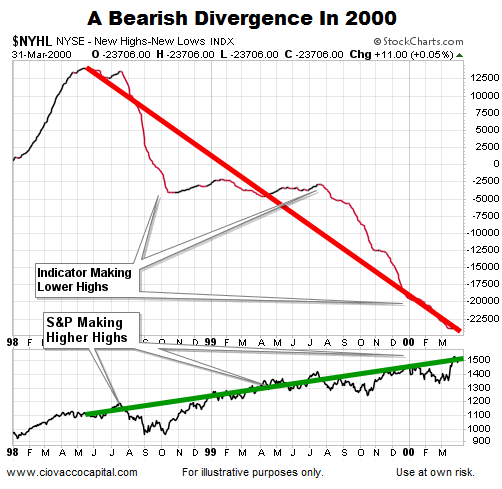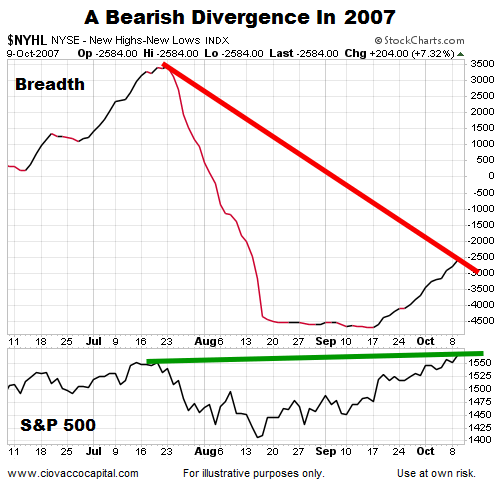Bad Breadth Can Foreshadow Bear Markets
Market breadth speaks to the number of stocks participating in an advance. Strong market breadth means a high percentage of stocks are making new highs as the major indexes make new highs. Strong breadth also aligns with widespread confidence in stocks and the economy.
Bearish Divergence In 2000
The chart below tracks the number of NYSE stocks making new highs minus the number making new lows. A bearish divergence was clearly evident well before the bull market peaked in March 2000.

Bearish Divergence In 2007
NYSE New Highs – New Lows ($NYHL) also failed to confirm the S&P 500’s new high in October 2007, telling us many stocks were already showing signs of weakness before the major averages peaked.

New Highs In 2017
How does breadth look as of November 21, 2017? Instead of a bearish divergence, $NYHL printed a new high as the S&P 500, Nasdaq, and Dow printed new highs. The current rally has broad participation from both sector and market capitalization (small, mid, large cap) perspectives. Instead of waving yellow flags as it did in both 2000 and 2007, $NYHL is telling us to be open to more upside in the major averages.

What Can We Learn From Asset Class Behavior?
Is asset class behavior confirming or contradicting the long-term charts covered in recent weeks? Are risk-on/risk-off ratios waving yellow flags in 2017? How do charts of numerous ETFs look today compared to 2007-2008? These questions are addressed in this week’s stock market video.
ETFs covered include tech (QQQ), bonds (TLT), large-cap growth (IWF), intermediate-term Treasuries (IEF), homebuilders (ITB), the VIX (VXX), consumer staples (XLP), the S&P 500 (SPY), gold (GLD), gold miners (GDX), semiconductors (SMH), silver (SLV), industrials (XLI), diversified bonds (AGG), internet stocks (FDN), the Yen (FXY), and Swiss Franc (FXF).












Leave A Comment